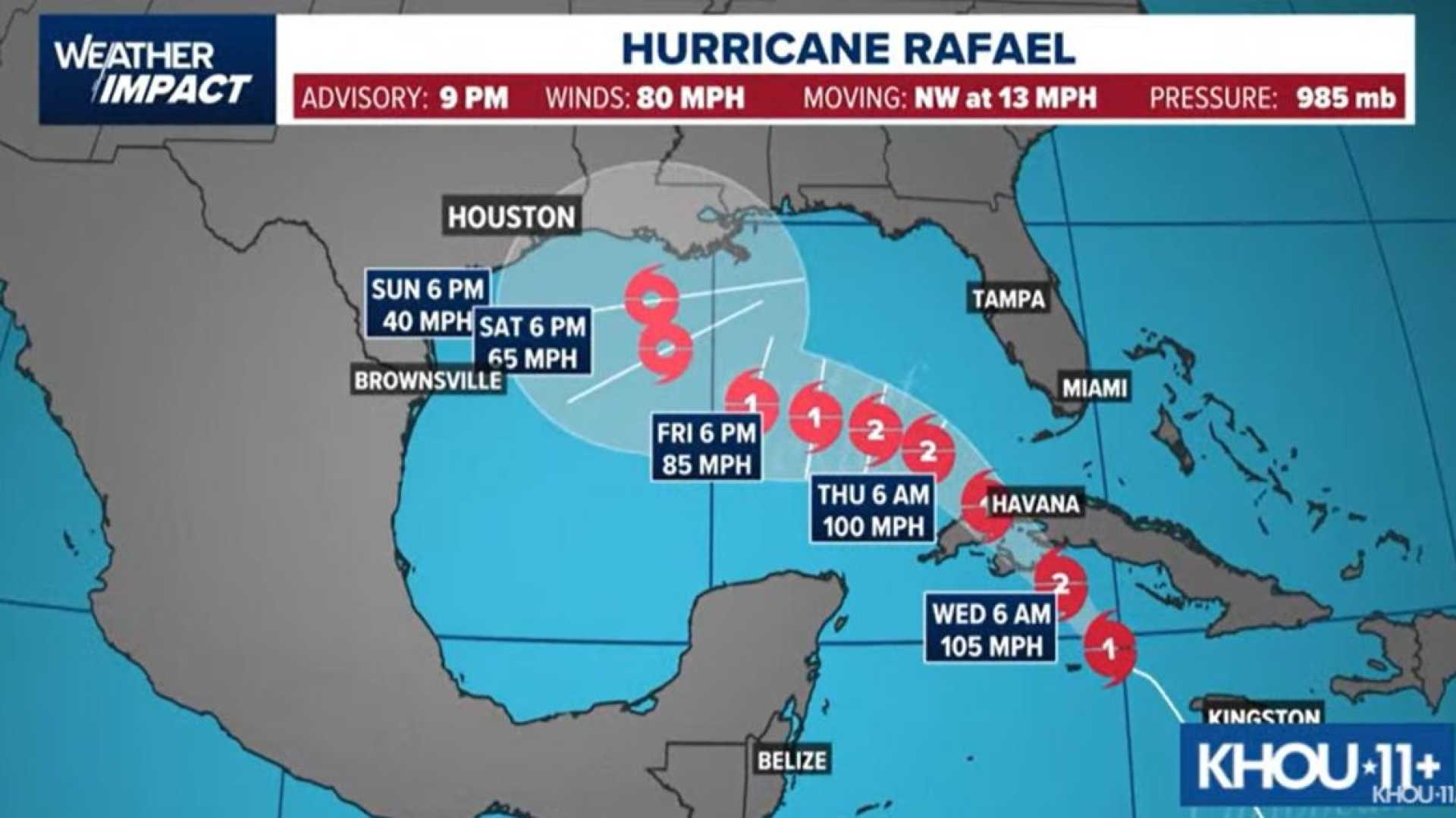News
Hurricane Rafael Strengthens in Caribbean, Poses Threat to US Gulf Coast

Hurricane Rafael has intensified into a Category 2 hurricane in the western Caribbean, prompting concerns for regions from the Caribbean to the U.S. Gulf Coast. As of the latest updates, Rafael is located near the Cayman Islands and is moving northwestward toward western Cuba.
The National Hurricane Center (NHC) forecasts that Rafael will continue to strengthen over the next 24 to 36 hours. The hurricane is expected to bring tropical storm conditions to Jamaica, and hurricane conditions to the Cayman Islands and western Cuba. Heavy rain, potentially leading to flash flooding and mudslides, is anticipated in these areas, with 3-6 inches of rain expected and locally higher amounts up to 10 inches possible.
Rafael is forecast to emerge into the Gulf of Mexico later this week, where it could impact areas from the Florida Panhandle to the Texas coast. The highest probability of landfall is currently along the central Louisiana coast, although the track remains uncertain due to potential changes in steering breezes and the influence of a non-tropical storm from the south-central U.S..
Residents along the U.S. Gulf Coast are advised to monitor the storm’s progress closely, as the potential for heavy rain, rough seas, and coastal flooding exists. Rafael’s winds are expected to be strong enough to create significant surf and trigger beach erosion along the shores of the Gulf of Mexico.
The AccuWeather RealImpact™ Scale for Hurricanes rates the impact on Cuba as a 2, considering factors such as rainfall, storm surge, and economic impacts. For the U.S., the RealImpact™ Scale is currently a 1, reflecting the potential for less severe impacts due to cooler waters and increasing wind shear as Rafael approaches the coast.












